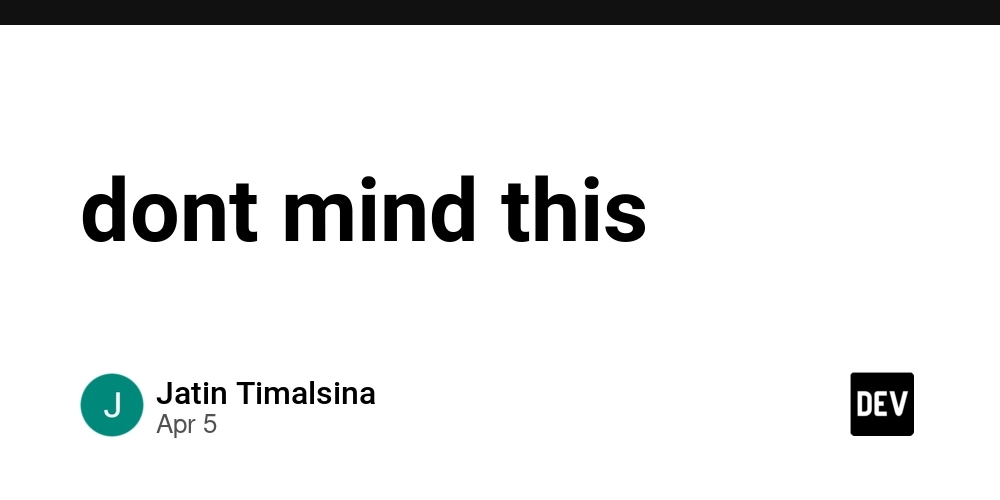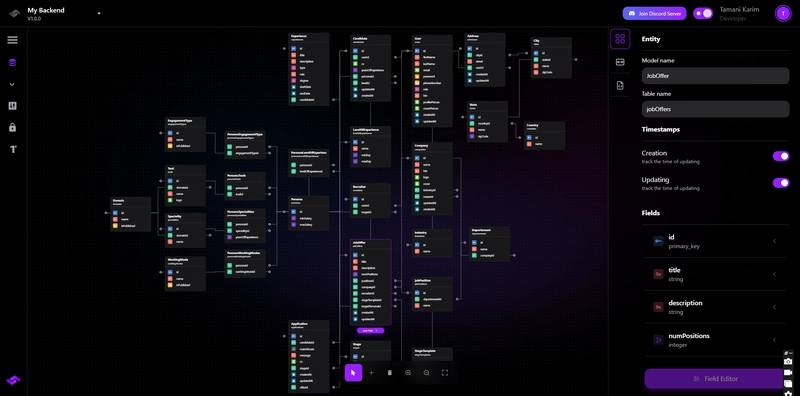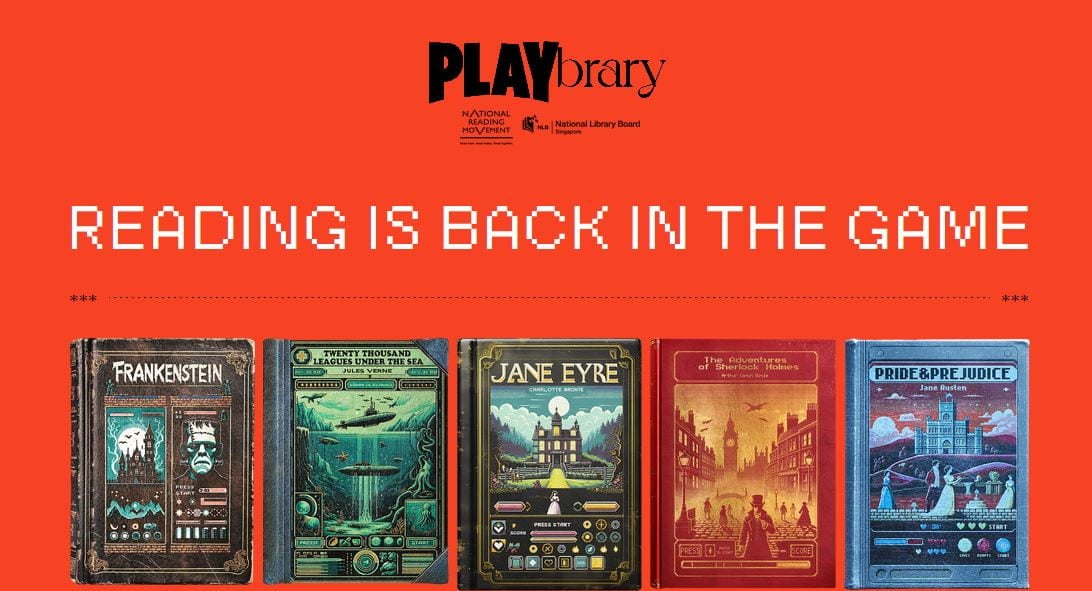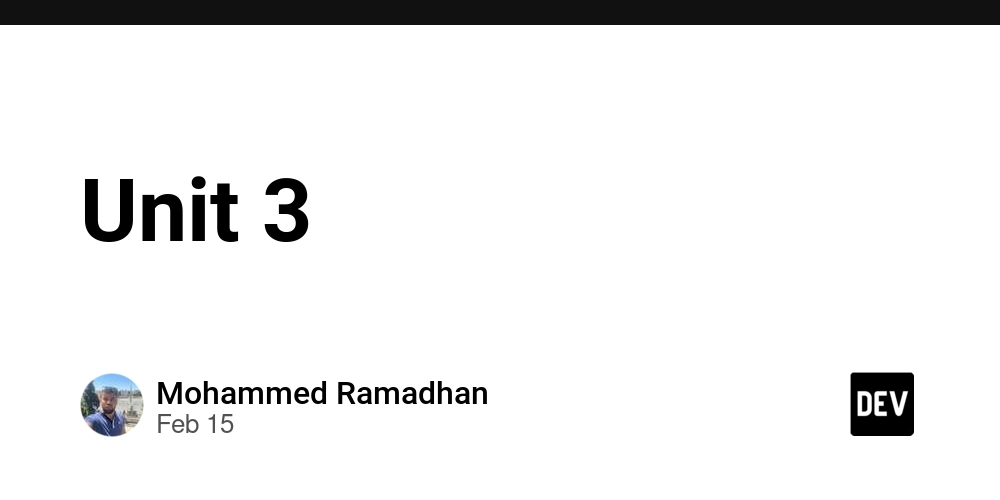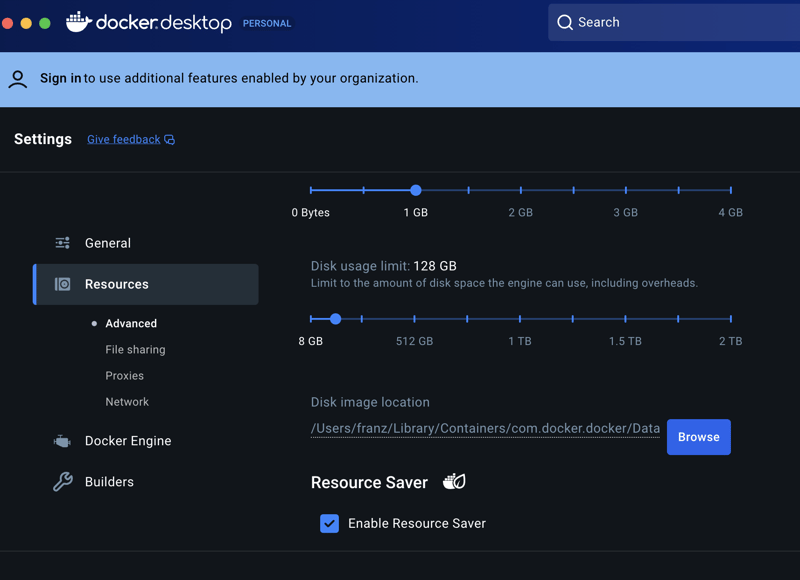Unleashing the Power of Gitcoin and Quadratic Funding: A New Frontier in Decentralized Innovation
Abstract This post explores the revolutionary funding mechanism of Gitcoin and its quadratic funding model. It covers the history and background of Gitcoin, defines its underlying core concepts, examines practical applications, and discusses challenges and future opportunities. By integrating blockchain technology, community-driven financial support, and decentralized governance, Gitcoin is reshaping open-source development and innovation in a sustainable manner. This article further links to authoritative sources and related projects to deliver an inclusive overview for technical audiences and curious innovators alike. Introduction Decentralized funding models are transforming how innovation is supported in today’s digital ecosystem. Gitcoin, a platform designed to empower open-source software projects, is at the forefront of this paradigm shift. Leveraging blockchain technology and the unique quadratic funding model, Gitcoin rebalances financial contributions in such a way that even small donations receive amplified impact. This new approach is not only democratizing funding but also ensuring that projects that hold genuine community value get recognized. Through this post, we delve into the inner workings of Gitcoin, exploring the quadratic funding mechanism as originally conceived by visionaries like Vitalik Buterin. We also illuminate practical use cases, highlight challenges, and predict future trends in this innovative ecosystem. For more detailed insights, you can refer to the Original Article. Background and Context The Emergence of Gitcoin Gitcoin was launched in 2017 with the mission of connecting developers to funding opportunities while promoting open-source collaboration. The platform is built on the principles of transparency and decentralization, using blockchain technology to provide a secure and efficient alternative to traditional financing methods. Historically, open-source projects have faced difficulties in securing consistent funding. Traditional models often rely on venture capital or sponsorships that can skew the focus to projects with large backers. Gitcoin, however, leverages a community-driven approach that ensures a broader array of projects receive support. What Is Quadratic Funding? Quadratic funding rebalances the formula of matching funds. The mechanism works by magnifying the impact of many small contributions, rather than simply matching large donations one-to-one. This is based on the principle that the collective support of a community can better indicate a project’s real-world value. The basic formula is represented as: • F(contribution) = Σ (√cᵢ) where cᵢ is an individual contribution. This formula ensures that projects with a wider base of small donors receive more matching funds, shifting the incentive toward projects that genuinely resonate with the community. Ecosystem Context Open-source funding isn’t confined to Gitcoin alone. New decentralized finance (DeFi) models, like those explored in decentralized finance for project funding, are emerging alongside similar community-driven methodologies. Gitcoin’s model integrates tightly with blockchain security, as discussed in blockchain technology for open-source security. These technological pillars allow for greater accountability, transparency, and efficiency across the entire ecosystem. Core Concepts and Features Gitcoin’s ecosystem is built upon several key concepts that interlink to create its powerful funding model: 1. Decentralization and Community Engagement Decentralized Governance: Gitcoin reduces the influence of centralized financial institutions. Its structure encourages open participation and enables community voices to direct funding. Community-Driven Projects: Projects receive support based on volunteer contributions rather than a few large donors. This truly democratizes software development. Blockchain Transparency: Every transaction on Gitcoin is tracked via blockchain, ensuring reliable records and financial integrity. 2. The Quadratic Funding Model Key features of quadratic funding include: Amplification of Small Contributions: Rather than letting large individual donations dominate, the matching algorithm gives extra weight to abundant, smaller contributions. Equitable Distribution: The funding formula redistributes resources more equitably, ensuring that novel or niche projects receive necessary support. Mathematical Fairness: The quadratic formula ensures that the influence of each donor is balanced, making the ecosystem more resilient to financial manipulation. Below is a table that neatly summarizes these core concepts: Core Concept Description Benefits Decentralization Empowering users and projects by eliminating single-point decision making. Increased transparency, democratic governance, and resilience against fraud. Quadratic Funding A matching mechanism that
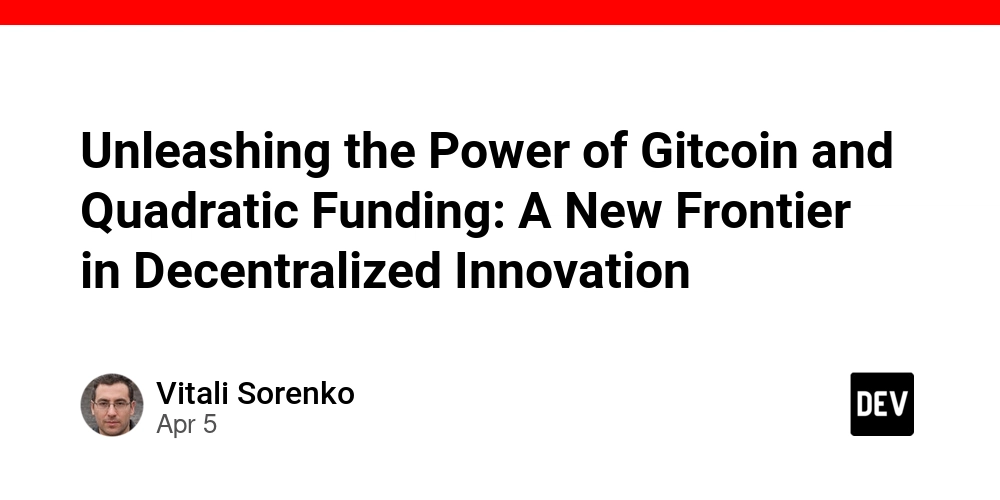
Abstract
This post explores the revolutionary funding mechanism of Gitcoin and its quadratic funding model. It covers the history and background of Gitcoin, defines its underlying core concepts, examines practical applications, and discusses challenges and future opportunities. By integrating blockchain technology, community-driven financial support, and decentralized governance, Gitcoin is reshaping open-source development and innovation in a sustainable manner. This article further links to authoritative sources and related projects to deliver an inclusive overview for technical audiences and curious innovators alike.
Introduction
Decentralized funding models are transforming how innovation is supported in today’s digital ecosystem. Gitcoin, a platform designed to empower open-source software projects, is at the forefront of this paradigm shift. Leveraging blockchain technology and the unique quadratic funding model, Gitcoin rebalances financial contributions in such a way that even small donations receive amplified impact. This new approach is not only democratizing funding but also ensuring that projects that hold genuine community value get recognized.
Through this post, we delve into the inner workings of Gitcoin, exploring the quadratic funding mechanism as originally conceived by visionaries like Vitalik Buterin. We also illuminate practical use cases, highlight challenges, and predict future trends in this innovative ecosystem. For more detailed insights, you can refer to the Original Article.
Background and Context
The Emergence of Gitcoin
Gitcoin was launched in 2017 with the mission of connecting developers to funding opportunities while promoting open-source collaboration. The platform is built on the principles of transparency and decentralization, using blockchain technology to provide a secure and efficient alternative to traditional financing methods.
Historically, open-source projects have faced difficulties in securing consistent funding. Traditional models often rely on venture capital or sponsorships that can skew the focus to projects with large backers. Gitcoin, however, leverages a community-driven approach that ensures a broader array of projects receive support.
What Is Quadratic Funding?
Quadratic funding rebalances the formula of matching funds. The mechanism works by magnifying the impact of many small contributions, rather than simply matching large donations one-to-one. This is based on the principle that the collective support of a community can better indicate a project’s real-world value. The basic formula is represented as:
• F(contribution) = Σ (√cᵢ)
where cᵢ is an individual contribution.
This formula ensures that projects with a wider base of small donors receive more matching funds, shifting the incentive toward projects that genuinely resonate with the community.
Ecosystem Context
Open-source funding isn’t confined to Gitcoin alone. New decentralized finance (DeFi) models, like those explored in decentralized finance for project funding, are emerging alongside similar community-driven methodologies. Gitcoin’s model integrates tightly with blockchain security, as discussed in blockchain technology for open-source security. These technological pillars allow for greater accountability, transparency, and efficiency across the entire ecosystem.
Core Concepts and Features
Gitcoin’s ecosystem is built upon several key concepts that interlink to create its powerful funding model:
1. Decentralization and Community Engagement
- Decentralized Governance: Gitcoin reduces the influence of centralized financial institutions. Its structure encourages open participation and enables community voices to direct funding.
- Community-Driven Projects: Projects receive support based on volunteer contributions rather than a few large donors. This truly democratizes software development.
- Blockchain Transparency: Every transaction on Gitcoin is tracked via blockchain, ensuring reliable records and financial integrity.
2. The Quadratic Funding Model
Key features of quadratic funding include:
- Amplification of Small Contributions: Rather than letting large individual donations dominate, the matching algorithm gives extra weight to abundant, smaller contributions.
- Equitable Distribution: The funding formula redistributes resources more equitably, ensuring that novel or niche projects receive necessary support.
- Mathematical Fairness: The quadratic formula ensures that the influence of each donor is balanced, making the ecosystem more resilient to financial manipulation.
Below is a table that neatly summarizes these core concepts:
| Core Concept | Description | Benefits |
|---|---|---|
| Decentralization | Empowering users and projects by eliminating single-point decision making. | Increased transparency, democratic governance, and resilience against fraud. |
| Quadratic Funding | A matching mechanism that boosts the influence of small donations. | Equitable fund distribution, support for community-driven innovation, and fairness. |
| Blockchain Security | Utilization of blockchain to track and verify transactions. | Enhances trust, reduces fraud risk, and ensures open-source integrity across projects. |
| Community Engagement | Participation from individual contributors through donations and active voting. | Improved project validation and enhanced community collaboration. |
3. Integration with Blockchain Technology
Gitcoin’s infrastructure relies on blockchain to ensure trust among stakeholders. By employing smart contracts and decentralized ledgers, Gitcoin guarantees that funds are allocated properly and transparently. This structure also supports other blockchain innovations such as blockchain for open-source funding and blockchain and decentralized finance.
4. Cross-Chain and Interoperability Features
Recent developments in the blockchain space, including various Layer‑2 solutions, have improved interoperability. For example, projects such as those discussed in arbitrum and community governance and arbitrum and Ethereum interoperability are streamlining how funds can move across chains. These innovations complement Gitcoin’s structure and offer more secure, efficient funding models for open source endeavors.
Applications and Use Cases
Gitcoin’s innovative approach has led to numerous practical applications. Here are a few examples:
- Funding Open-Source Tools and Libraries: Projects developing developer tools for better software integration have received critical funding through Gitcoin Grants. This support often helps software ecosystems grow and ensures tools remain free and community controlled.
- Educational Resources: Gitcoin has supported numerous initiatives that provide educational content on topics ranging from coding best practices to blockchain integration. Projects receiving widespread community interest benefit from small, aggregated donations that promote educational equity.
- Decentralized Governance Models: Many projects using Gitcoin adopt or serve as testbeds for decentralized governance. As seen in arbitrum and open source license compatibility and arbitrum and project grants, these models drive innovation by ensuring that decisions are made collectively through democratic means.
Bullet List of Key Use Cases
- Funding critical open-source toolkits
- Supporting cross-chain interoperability projects
- Empowering decentralized educational initiatives
- Encouraging diversified community-backed innovations
- Enhancing security through blockchain transparency
These models not only finance projects but also empower diverse voices within the technology space, ensuring a future where development is driven by grassroots passion.
Challenges and Limitations
While the Gitcoin model and quadratic funding bring many benefits, they also face several hurdles:
1. Vulnerability to Sybil Attacks
One of the prominent challenges is the risk of sybil attacks, where malicious actors create multiple identities to skew donation counts. Although Gitcoin employs robust identity verification and decentralized voting, ensuring absolute integrity remains difficult.
2. Market Volatility
The cryptocurrency market’s inherent volatility can affect the value of donated funds. Projects may experience fluctuations in their funding, which can interfere with long-term planning and development stability.
3. Overemphasis on Popularity
Since quadratic funding rewards widespread support, projects with niche but highly innovative ideas may struggle to gain sufficient community traction. Critics argue that the system risks sidelining technically complex projects in favor of more pop-culture or widely appealing projects.
4. Scalability Issues
As the platform grows, ensuring that the blockchain infrastructure scales efficiently becomes critical. While improvements are ongoing, there is still some debate over how scalable such decentralized models are in practice.
Below is a bullet list summarizing these challenges:
- Risk of sybil attacks despite verification measures
- Unpredictable cryptocurrency market volatility
- Potential bias toward projects with mass appeal
- Scalability and infrastructural strain with a growing user base
Future Outlook and Innovations
Gitcoin and quadratic funding are poised for substantial evolution in the coming years. Here are a few trends and innovations that may shape their future:
1. Enhanced Security Protocols
Developers are continually working to counteract vulnerabilities such as sybil attacks. Future innovations may introduce advanced identity verification and improved decentralized consensus models. Upgrades aligning with solutions like blockchain technology for open-source security and arbitrum and fraud detection will play key roles in this evolution.
2. Cross-Chain Optimization
The move toward cross-chain interoperability is already underway, with systems like Arbitrum optimizing asset transfers between blockchains. Enhanced interoperability means funds can be utilized more efficiently and projects can tap into larger, more diverse funding pools.
3. Broader Adoption in Diverse Sectors
Innovation is not confined to technology alone. Concepts of decentralized funding and community engagement are likely to spread into sectors such as education, public goods, and even art. The principles outlined in articles like innovative funding for open-source projects suggest that these models may soon fuel cross-industry breakthroughs.
4. Experiments in Dual-Licensing and Revenue Models
Future improvements could see the integration of dual-licensing approaches that allow open-source software to benefit from both community funding and proprietary revenue streams. This hybrid model could offset some of the risks of over-dependence on community popularity while still adhering to the principles of decentralization.
5. Broader Support from Institutional Actors
Increasing institutional interest in blockchain and decentralized finance may see new partnerships and sponsorship programs. Initiatives like those discussed on Gitcoin and related blockchain-and-decentralized-finance pages already hint at a merging of traditional systems with new funding models.
Integration with Developer Communities
There is significant potential for more integrated support channels. Dev.to articles such as Supporting the Backbone of Innovation: Financial Assistance for Open Source Developers and Elon Musk’s Open Source Licensing Model: A New Frontier in Innovation illustrate how prominent tech leaders and developer communities are keenly watching these innovations.
Conclusion and Summary
Gitcoin’s deployment of quadratic funding stands as a testament to how decentralized technical ecosystems can empower open-source projects. By relying on blockchain transparency, community participation, and mathematically driven matching algorithms, Gitcoin reshapes the funding landscape in favor of fairness and wide-scale participation.
In summary:
- Gitcoin reinvents financial support for open source by linking developers to funds in a decentralized, transparent manner.
- Quadratic Funding leverages the power of many small donations to produce a more equitable distribution of funds.
- Integration with Blockchain ensures accountability and security while facilitating cross-chain interoperability.
- Challenges such as sybil attacks, market volatility, and potential pop-culture bias remain areas for ongoing innovation.
- Future Outlook promises enhanced security, broader interoperability, and increasing institutional support.
As we observe these evolutionary trends, it is clear that the combination of Gitcoin’s community-driven framework and quadratic funding is revolutionizing how we think about supporting public goods and innovation. For further details on this transformative approach, explore the Original Article.
Below is a summary table of Gitcoin’s potential benefits and future challenges:
| Aspect | Benefits | Potential Challenges |
|---|---|---|
| Funding Equity | Amplified impact of small donations; equitable distribution | Vulnerability to sybil attacks and popularity bias |
| Community Engagement | Enhanced democratic decision-making; diverse participation | Risk of fragmentation in community governance |
| Blockchain Integration | Transparent transactions; robust security measures | Scalability and market volatility concerns |
| Interoperability | Cross-chain asset mobility; access to a larger funding pool | Need for continuous upgrades and increased complexity |
By addressing these areas and embracing the openness of the decentralized approach, Gitcoin and the quadratic funding model offer a glimpse into a future where every voice has the power to shape innovation.
For additional reading on related topics, check out these authoritative resources:
• Gitcoin Official Site
• Open-Source Licensing Models on Blockchain
• Blockchain for Open-Source Funding
• Arbitrum and Community Governance
• Arbitrum and Cross-Chain Bridges
Additionally, influential posts from developer communities have also highlighted these trends:
• Supporting the Backbone of Innovation: Financial Assistance for Open Source Developers
• Elon Musk’s Open Source Licensing Model: A New Frontier in Innovation
• Unveiling the OpenSSL License: A Deep Dive into Open Source Security
Final Thoughts
The current innovative funding strategies reveal that a reimagined financial ecosystem is not just a theoretical possibility – it is here. Gitcoin’s model represents a bold redefinition of how public goods and open-source initiatives can be sustainably funded. By embracing decentralized methods and rethinking traditional financial frameworks, the future of innovation looks brighter and more inclusive.
As these funding models continue to mature, they are set to inspire further breakthroughs in diverse areas such as open-source licensing, decentralized governance, and community-driven innovation. Whether you are a developer, investor, or technology enthusiast, understanding these trends is essential to navigating—and thriving in—the future of decentralized innovation.
With refined security, broader interoperability, and increased institutional partnerships on the horizon, Gitcoin and quadratic funding stand as models for the next wave of open-source innovation. Together, they illustrate a future where every small contribution blossoms into significant change, proving that even a chorus of individual voices can create a symphony of innovation.
Stay tuned for more updates as we continue to follow these revolutionary changes in funding technology and decentralized governance, shaping the future of global innovation.










